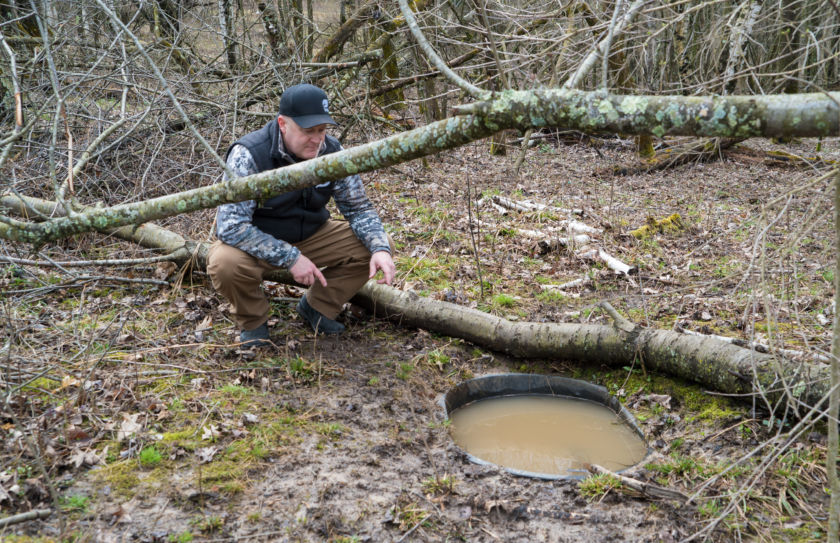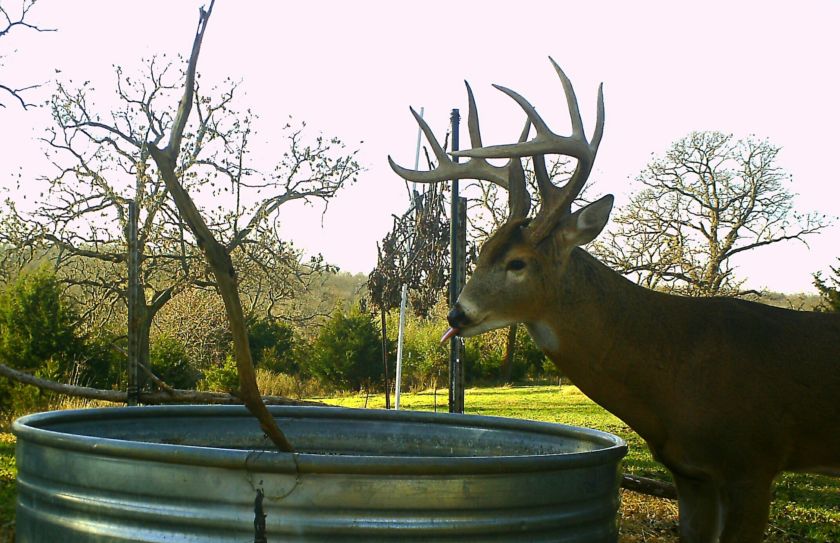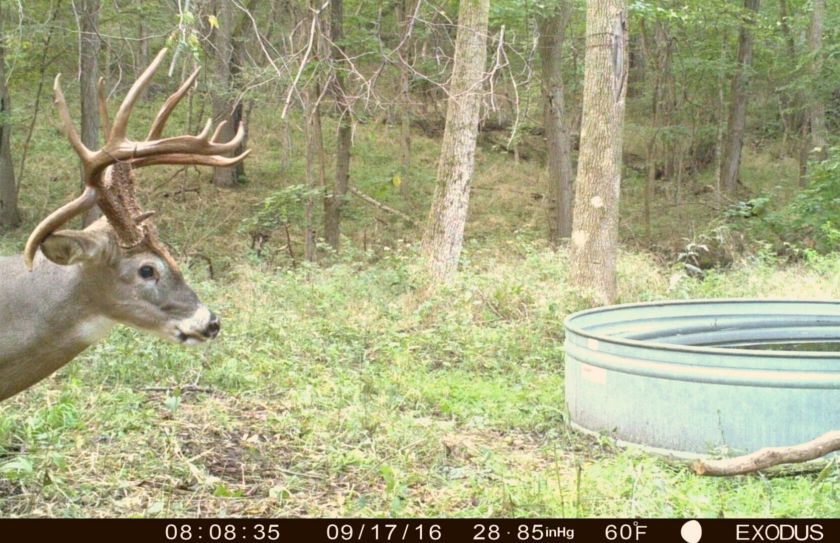Installing a waterhole is pretty easy and can still be completed in time for the start of the season. Years ago I first used 55 gallon barrels cut in 1/2 lengthwise, and then buried them deep into the soil so that the top of the 1/2-barrel was below ground level. A few years ago we switched to all, 110 gallon tanks because they simply, held water longer. Waterholes of 200 gallons or more are not a bad idea either...they just require more digging. Waterholes are outstanding when the conditions for water are in place! After your conditions for water are diagnosed, I hope that you enjoy these 5 steps to an easy whitetail waterhole.
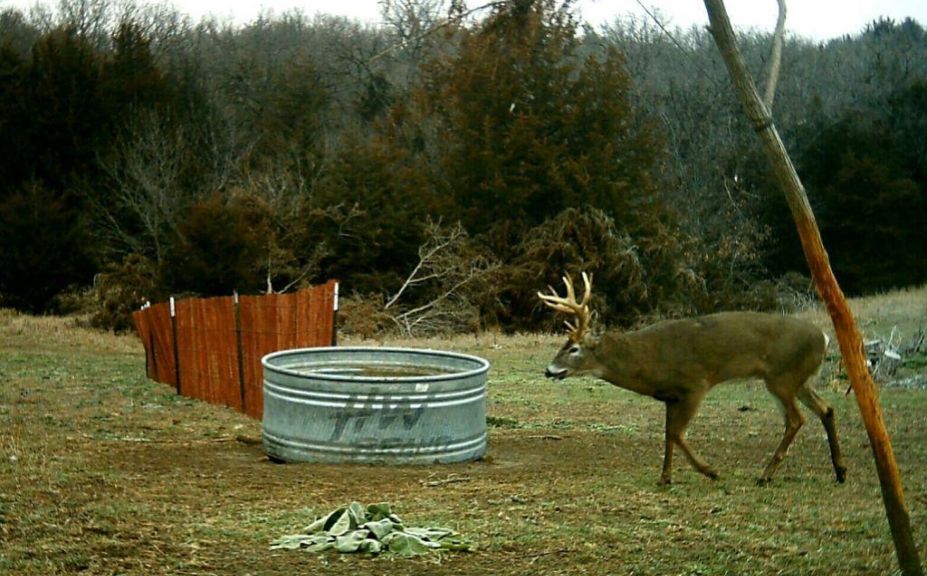
Conditions For Highly Effective Whitetail Waterholes
1. The bedding area that you are hunting near, is "dry". No swamp, stream, etc.
2. The food source you are hunting near is dry.
#1 is the most important condition. Even if the deer have all the water they need withing their evening food source, they will still visit water on the way to food if they have been holed up in a dry bedding area all day. This is also a great reason for you tolimit water within major food sources! The less water you offer within a major food source, the higher the value of the water that you offer between dry bedding and the food source.
Have you ever heard that deer are lazy? Well I am sure that most of you have seen that they are! You can have the best bedding area in the neighborhood, but if the conditions are right and your neighbor has water...you can bet the bulk of the deer on your property will head for your neighbor's water. Because deer are lazy, it is very hard to get them to change direction once they head the wrong way. By offering water between food and bedding (even if the bedding is on your neighbors), you can easily set the stage for a potential bowhunting hotspot.
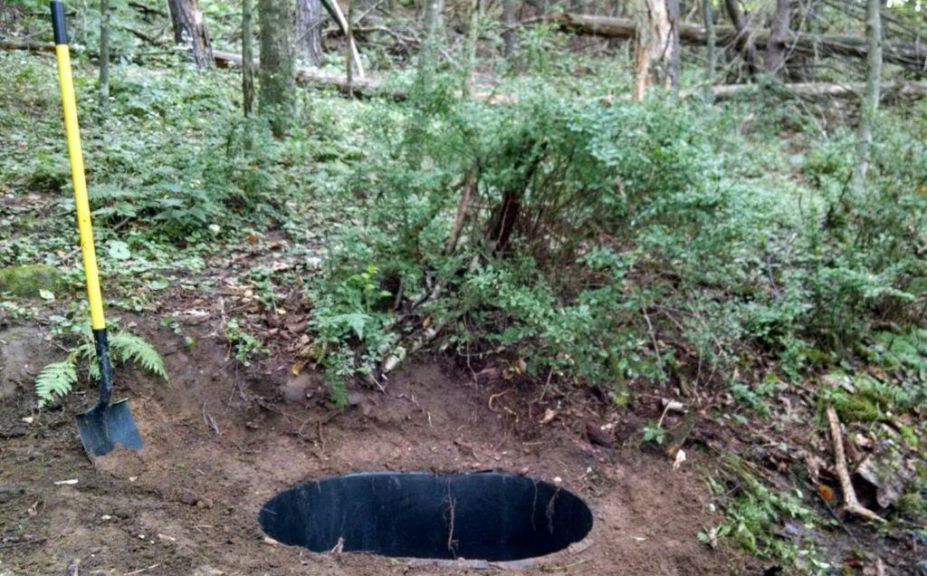
*I had to personally install several waterholes on my new hunting grounds last year. The process for creating my own easy whitetail waterholes can be read in,"New Waterhole Stand Locations".
Whitetail Waterhole Locations
The location of course, is critical. I recommend that you never install a waterhole unless you can hang a bowstand within shooting distance (if you bowhunt). By placing a waterhole away from stand locations, you actually deminish the value of the surrounding stand locations by pulling deer away from the stand locations to the water. Use water to reinforce existing natural movements, and to slightly alter travel to areas that you can access stand locations with a low % potential of spooking deer.
A prime example of a great waterhole location is when you combine a cruising area adjacent to a bedding area, and on the opposite side of a staging area from an evening food source. Your goal in this situation would be to capture movement 75-100 yards or more from the entrance of the food source, and far enough away from the bedding area to be able to access the stand a stand without spooking deer. By creating the waterhole at the edge of the deer movement, and the beginning of movement cover, you can greatly eliminate the potential for spooking game, as well as to create a quick-stop for an easy whitetail waterhole. Deer can then exit to the staging area, and finally the food source. Often, a bedding area to food source movement is a straight-line movement, perpendicular to the food source to even slightly angled. However, cruising traffic often parallels the food source and by placing the waterhole within that "X" of movement you can take full advantage of the draw of the waterhole.
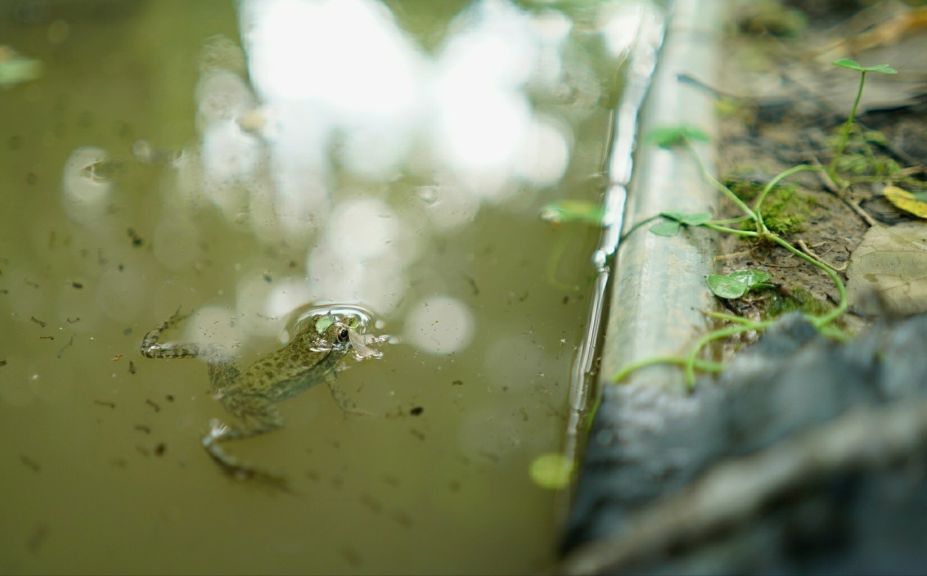
*For a link to the complete package of waterhole videos and articles, check outDeer Waterhole Hunting Strategies.
5 Easy Whitetail Waterhole Installation Tips
1. Find the right location (see notes above)
2. Using your desired size of tank, dig a hole to fit the tank so that the top of the container is below ground level. This will insure adequate natural filling of the tank and if you install the tank into the side of the ridge, you can create small ditches to help "self-fill". Of course, self-fill is always best!
*You will have to figure out if digging a tank completely into the ground is the best tactic in your area. Although installing an easy whitetail waterhole at ground level will never hinder your efforts, it is a lot of work! Let the amount of hunting pressure in the area be your guide. If you are located in a low-pressure Iowa setting as pictured above, then you can easily get away with a metal stock tank placed on the ground. On the other hand, if you are in a high-pressure Southern MI setting, the most naturally appearing waterhole that you can create is critical to your success.
3. Fill 1/4 to to 1/3 full of soil. This will allow for natural mineral/soil flavoring and scent.
4. Fill with water, if you can...and place a stick within the tank to allow critters to escape.
5. Use the soil that you shoveled to back-fill around the tank for a tight, finished and most natural look.
*Maybe your kids will like to help install a waterhole, like mine! Check out the video below to see how easy it is (with a little elbow grease) to create a waterhole.
*It really is, this easy...
Conclusion
You are now finished! Keep in mind that deer are attracted to the water because water is scarce. So, the more water you add, the lower the level of attraction per tank, especially if multiple water sources are available within 1 deer line of movement. 3-4 is common for 80 acres...4-6 for 160 acres, but at some point by adding more water, you reach a diminishing return on the level of attraction per waterhole.
If you have the proper conditions, waterholes are one of the most powerful, mature buck ambush locations that you can create on your land. Expect deer to use them prior to evening feeding, and for mature bucks to use them all-day long once heavy cruising begins.
